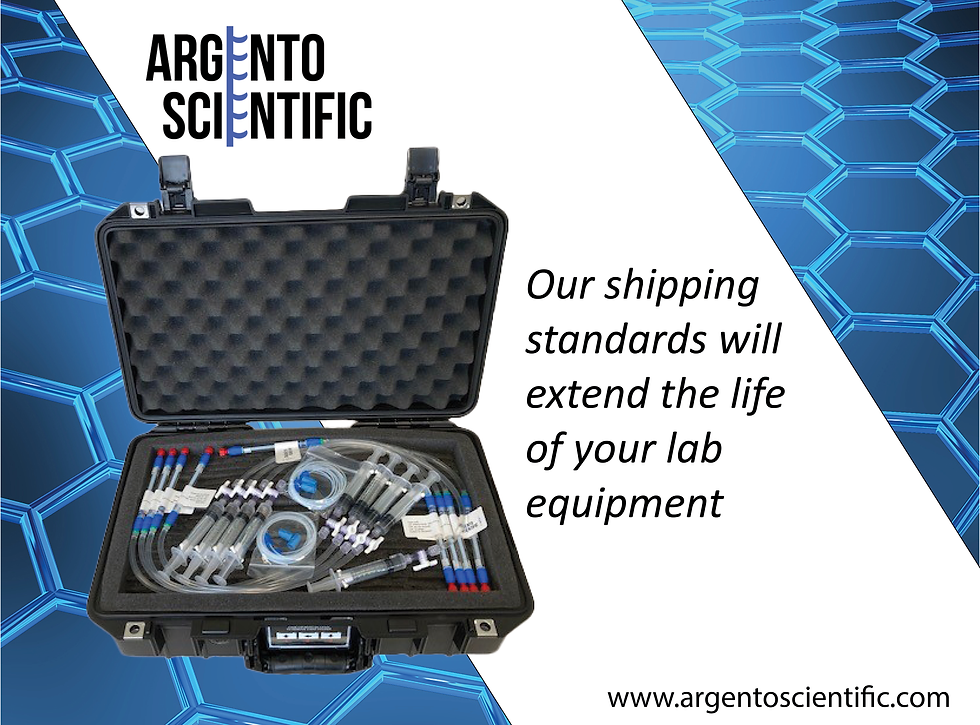If You Run HPLC This Could Be You! Tips on How to Avoid Surprises with Waste Solvent Overflows
- adrian6524
- Mar 2, 2024
- 3 min read
Updated: Mar 4, 2024
Anyone using liquid chromatography to separate samples knows that the spent solvents have to go somewhere. The solvents start in bottles, usually on the top of the instrument, they do their work in the column, and then they drain into a container under the lab bench where they wait to be collected and disposed.
Waste solvents can be volatile, toxic, corrosive, and flammable. Regulations (EPA Title 40 CFR 264.173 and EPA Title 40 CFR 261, Subpart D) apply to how the chemicals are stored since escaping vapors are toxic. Containers need to be “closed” and escaping fumes need to be scrubbed through a carbon filter. It’s also important that the chemicals don’t fill up the container, overflow, and drip on the floor. This happens more than you might think.
The waste solvent container usually sits under the lab bench, an area that’s often dimly lighted. The containers themselves range from being opaque to being milky-translucent, so it’s not easy to see how full they are. Poking a container with your foot shakes the fluid inside and makes the level easier to see, but you have to remember to do it, and a lab can have dozens of systems generating waste. All of those systems run at different speeds and at different times of day. It’s easy to miss one container and have it overflow.
Overflows aren’t fun. There’s usually paperwork and reporting involved. Someone has to clean up the toxic mess. Taking into account the time to report and remediate a spill, and any disruption to experiments, a single overflow can cost thousands of dollars. Some labs have spills every week.

The way to avoid overflows is to install sensors. Sensors detect the fluid level inside the waste container and communicate this information in time for someone to empty the tank. Several design options exist for sensors. Float sensors contact fluid directly and trigger as they float upwards. Floats need to be made of materials that resist the chemicals. Float sensors only need power when they trigger, not the rest of the time when they’re inactive, so they can operate with battery power. Since they don’t need to be plugged in float sensors free up power outlets in the lab and they avoid the need for power cables..
Capacitive sensors work by creating an electrical field that is affected by the presence or absence of a liquid. Unlike floats, capacitive sensors can attach to the outside of the waste container and sense the fluid next to where they’re located. Capacitive sensors need constant power to work so they need to be plugged in.

Whether the detection happens with a float, a weak electrical field or by some other means, the signal needs to get to the right person. Some sensors do this by relying on wires that run across lab benches or under the ceiling. That can get cumbersome. Another approach is for the sensors to transmit their status with short-distance radio signals. This system is similar to the transmitter in car keys. The keys can lock or unlock the car from across the parking lot, but not from a mile away. Under this approach each sensor alerts with light and sound, but it also transmits its alarm signal to a centralized bridge, or to several bridges, located in the lab or down the hall. Each bridge can be easily paired or un-paired to one or multiple sensors in order to receive a signal or to ignore it. When the bridge receives an alarm signal the bridge lights up and makes a sound. It can also feed data about sensors into a lab management system.
Chromatography is a wonderful tool, but it uses aggressive chemicals that need to be handled and stored. Systems for safely capturing and monitoring these chemicals can save money and make life in the lab easier.
Watch a live demo of the Solvent Sentry Level Sensor in action!
Helpful Links to More of our Products





Comments